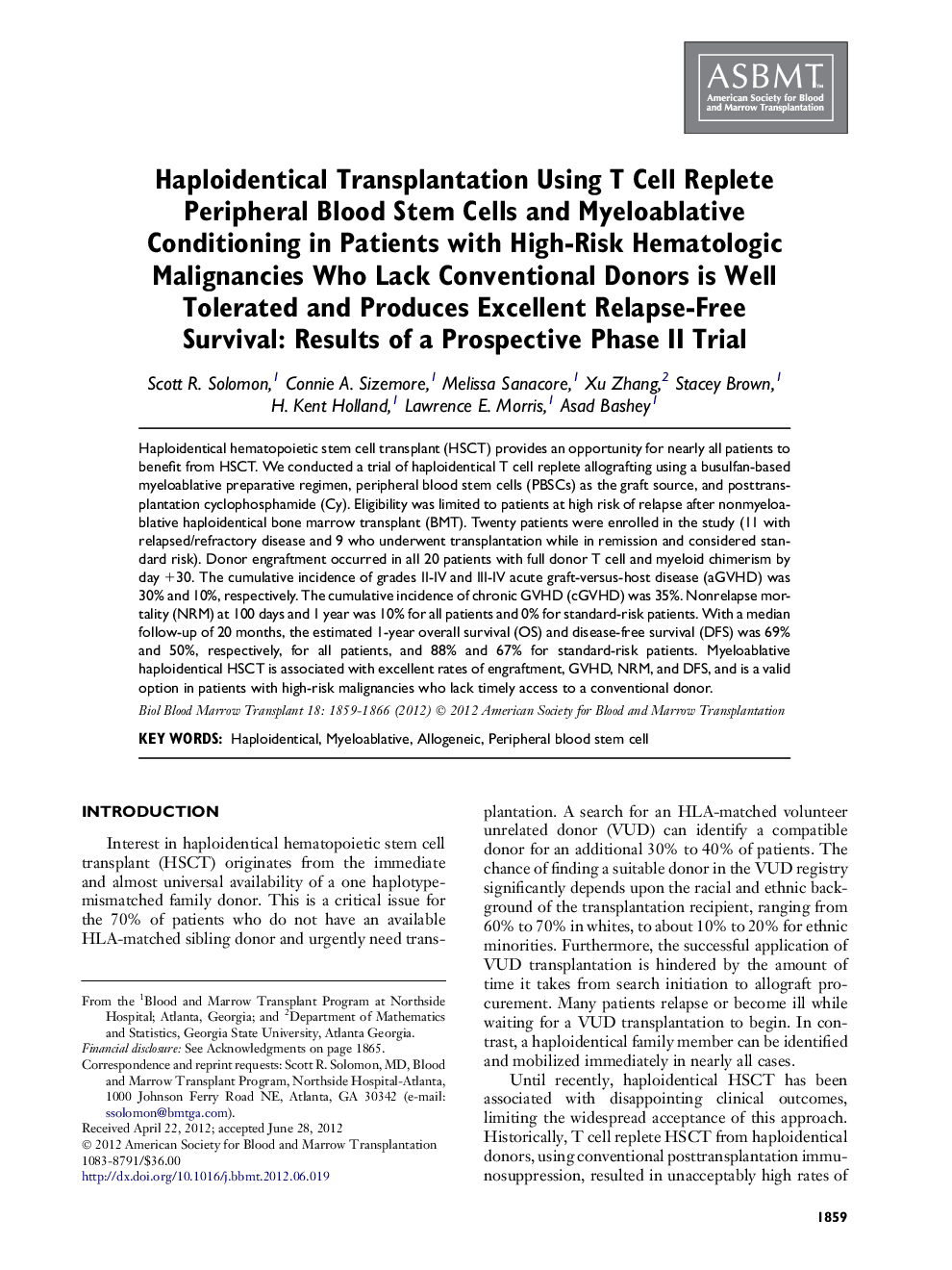| Article ID | Journal | Published Year | Pages | File Type |
|---|---|---|---|---|
| 2103536 | Biology of Blood and Marrow Transplantation | 2012 | 8 Pages |
Haploidentical hematopoietic stem cell transplant (HSCT) provides an opportunity for nearly all patients to benefit from HSCT. We conducted a trial of haploidentical T cell replete allografting using a busulfan-based myeloablative preparative regimen, peripheral blood stem cells (PBSCs) as the graft source, and posttransplantation cyclophosphamide (Cy). Eligibility was limited to patients at high risk of relapse after nonmyeloablative haploidentical bone marrow transplant (BMT). Twenty patients were enrolled in the study (11 with relapsed/refractory disease and 9 who underwent transplantation while in remission and considered standard risk). Donor engraftment occurred in all 20 patients with full donor T cell and myeloid chimerism by day +30. The cumulative incidence of grades II-IV and III-IV acute graft-versus-host disease (aGVHD) was 30% and 10%, respectively. The cumulative incidence of chronic GVHD (cGVHD) was 35%. Nonrelapse mortality (NRM) at 100 days and 1 year was 10% for all patients and 0% for standard-risk patients. With a median follow-up of 20 months, the estimated 1-year overall survival (OS) and disease-free survival (DFS) was 69% and 50%, respectively, for all patients, and 88% and 67% for standard-risk patients. Myeloablative haploidentical HSCT is associated with excellent rates of engraftment, GVHD, NRM, and DFS, and is a valid option in patients with high-risk malignancies who lack timely access to a conventional donor.
